Amazing Photos of American Houses Around 1900
In 1900, for instance, a typical American new home contained 700 to 1,200 square feet of living space, including two or three bedrooms and one or (just about as likely) no bathrooms. It was probably a two-story floor plan.
At the turn of the 20th Century, more than 20 percent of the U.S. population lived in crowded units, with entire families often sharing one or two rooms. Most homes were small, rural farmhouses and lacked many basic amenities, complete plumbing and central heating chief among them.
A set of amazing photos from paws22 that shows what American houses looked like in the late 19th and early 20th centuries.

|
| Burton family with sod house, Bartley, Nebraska |
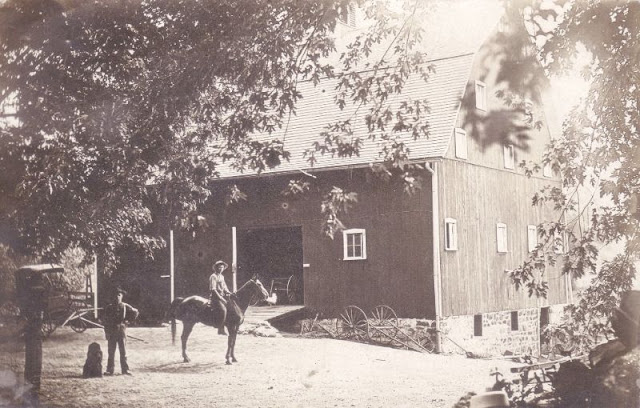
|
| Barn and horseman |

|
| Big brick house |

|
| Country cottage with family |

|
| Eaton homestead, Tacoma, Virginia |

|
| Eck farm, Bloomfield, Knox County, Nebraska |

|
| Family and home |

|
| Family on porch |

|
| Fancy house in Hickman, Nebraska. |

|
| Fancy house in Hickman, Nebraska |

|
| Fancy house, Hastings, Nebraska |
 |
| Fancy Victorian house, Hickman, Nebraska |
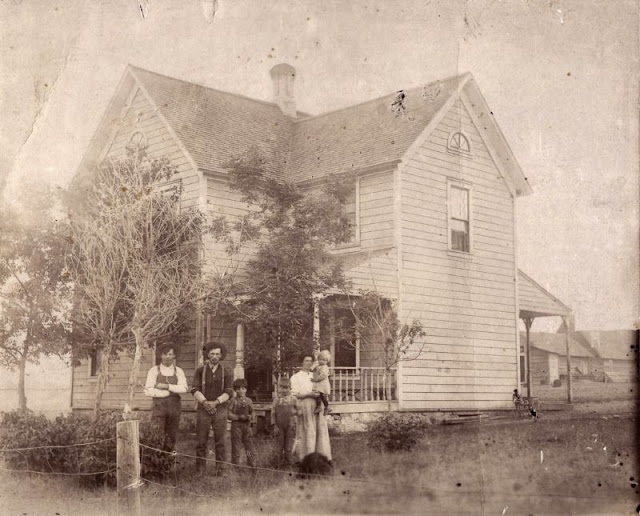 |
| Farm family |

|
| Farm house at Chadron, Nebraska |
 |
| Farm house |
 |
| Grandpa Cosberg’s house |
 |
| Grapotte’s Kill Kare chaunmout |
 |
| Log cabin in Nebraska |
 |
| Log cabin in Nebraska |
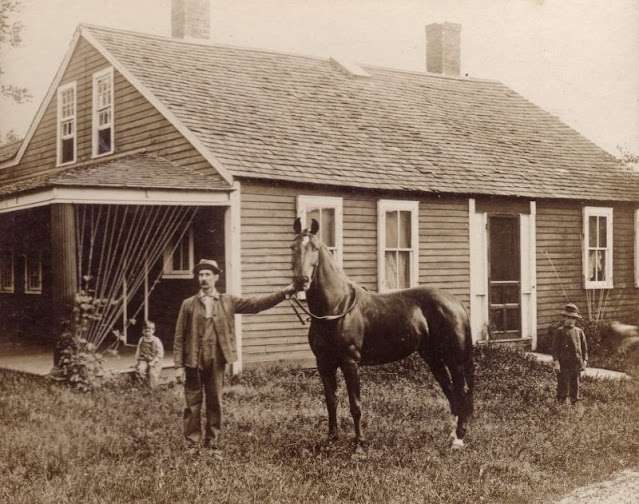 |
| Man with kids, horse and home |
 |
| Mars, West Virginia |
 |
| Mrs. Ballard’s house, Timpson, Texas |
 |
| New England Colonial |
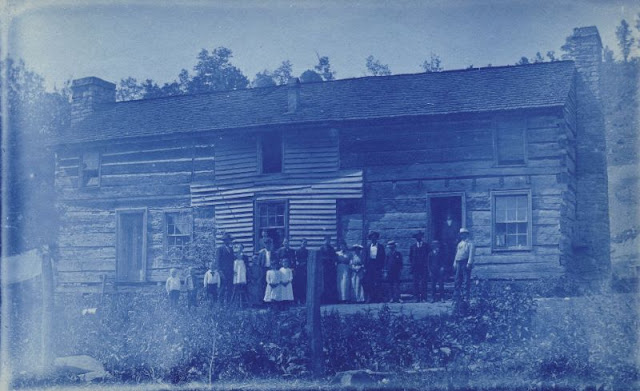 |
| Old Hoge homestead, Hoge family of Tacoma, Virginia |
 |
| Old homestead |

|
| Old house |
 |
| Paul McKinney, Mark Finisy and horse |
 |
| Rural house |
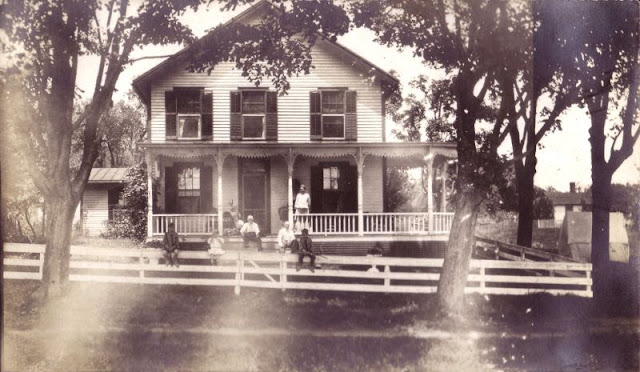 |
| Rural house |
 |
| Rural house |
 |
| Rural house |
 |
| Stone American 4 square house |
 |
| The ranch |
 |
| Thompson farm in Barron, Wisconsin |
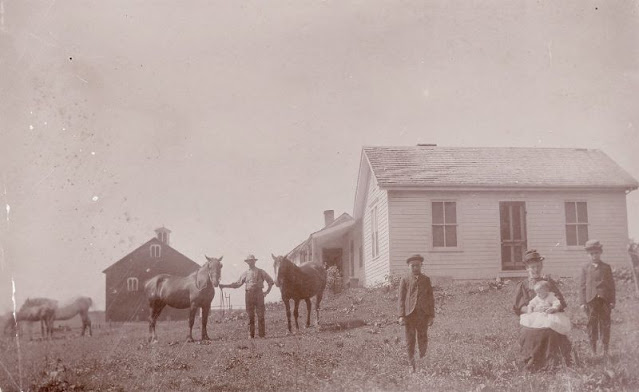
|
| Wisconsin homestead |
25 Found Photos Show House Interiors in the 1900s and 1910s
A typical Edwardian interior was something new and cheerful. Fresh and light colors composed most of the interiors in this period. It saw the beginning of a deviation from the formal to informal.
Furnitures started being made of bamboo and wicker. They were made in various styles which included baroque, rococo and empire. Modern creativity made these furnitures simple yet close to the elite. The wing chair can be cited as one of the best examples to demonstrate Edwardian furnitures.
Flooring of an Edwardian room was composed of highly polished wood blocks accompanied by oriental rugs. There was also a notable increase in the use of flowers and floral pattern in decorating houses. Wallpapers started featuring floral patterns of rose, lilac and other bright flowers.
These amazing photos were found by Carl-Fredric that show house interiors in the 1900s and 1910s.

























Vintage Portraits of Child Labor in the United States in the Early 20th Century
The 1900 U.S. census (a count of the nation’s population and related statistics taken every ten years) showed that 1.75 million children (about 18.2 percent) aged ten to fifteen years old were working. Not included in the census were children younger than ten who held jobs in mills, in factories, and on the streets. Had this group been included, the total number of child laborers would have exceeded two million (about 21 percent).
Children held many types of jobs. Kids as young as five often worked as newsies (children who sold newspapers on the streets), toiling into the midnight hours. They often got sick because of the long hours and bad weather, and many died due to lack of nutrition and medicine.
Other young children worked in factories, running large machines. They worked twelve- to fourteen-hour shifts, eating only during break time. Children’s jobs also included rolling cigars, weaving baskets, picking fruit, working with oysters and shrimp, and setting bowling pins. Many of these jobs required children to work many hours even before sunrise.
Many children also worked informally in fabric mills, tagging along with an older sibling. The average pay for children in fabric mills was 48 cents for a twelve-hour day. Children were paid less than adults, who were also underpaid during the nineteenth and early twentieth centuries. At that time, many believed that children should work because it helped them develop a strong work ethic. Many employers took advantage of children; parents found it difficult to keep their kids away from hard labor because the additional income was crucial to the family’s survival.
.jpg)
|
| Photograph shows half-length portrait of two girls wearing banners with slogan “ABOLISH CH[ILD] SLAVERY!!” in English and Yiddish (“(ני)דער מיט (קינד)ער שקלאפער(ײ)”, “Nider mit Kinder Schklawerii”), one carrying American flag; spectators stand nearby. Probably taken during May 1, 1909 labor parade in New York City. |
.jpg)
|
| Young Spanish-American boy shortly after the last exam at school. He will probably not come to school tomorrow since children are not required to on the last few days in order to work. on April 10-16, 1941. |
.png)
|
| African American boy selling The Washington Daily News – sign on his hat reads, “Have you read The News? One cent” – headline reads “Millionaire tax rends G.O.P.”, 1921. |
.jpg)
|
| Boy at warping machine in Newton Cotton Mill. Been there 2 years. Newton, N.C., 1908. |
.jpg)
|
| Child Labor in the Textile Mills. The Lawrence textile strike was a strike of immigrant workers in Lawrence, Massachusetts in 1912 led by the Industrial Workers of the World. |
.jpg)
|
| Albernesi Family, 126 W. Eagle St. Left to right: Frank Albernesi, 5 years old. Libori Albernesi, 15 years old, Joseph Albernesi, 13 years old. Family goes to country in summer to pick fruit. Location: Buffalo, New York (State), 1910. |
.jpg)
|
| Boys picking over garbage on “the Dumps.” Boston. Location: Boston, Massachusetts. 1908. |
.jpg)
|
| Brown McDowell 12 year old usher in Princess Theatre. Works from 10 A.M. tp 10 P.M. Can barely read; has reached the second grade in school only. Investigator reports little actual need for earnings. Location: Birmingham, Alabama. 1914. |
.jpg)
|
| Charlie Foster has a steady job in the Merrimack Mills. School Record says he is now ten years old. His father told me that he could not read, and still he is putting him into the mill. See Hine report. Location: Huntsville, Alabama. 1913. |
.jpg)
|
| “Children and Sugar Beets” Hall County, Nebraska, October 17, 1940. |
.jpg)
|
| A 13-year old boy pushes a loaded coal car at the Knoxville Iron Company mine near Coal Creek (now Lake City) in the U.S. state of Tennessee. 1910. |
.jpg)
|
| Boys move coal cars at the entrance to the Knoxville Iron Company’s mine near Coal Creek (now Lake City) in the U.S. state of Tennessee. 1910. |
.jpg)
|
| Eagle and Phoenix Mill. “Dinner-toters” waiting for the gate to open. Many of them are paid by the week for doing it, and carry, sometimes ten or more a day. They go around in the mill, often help tend to the machines, which often run at noon, and so learn the work. April, 1913. |
.jpg)
|
| Only 5 pupils present out of about 40 expected when beet work is over. School #1, Dist. 3, Ft. Morgan, Colo. Oct. 26/15, over five weeks after school opened. The poor attendance in all these schools is due, almost entirely to beet work. Location: Fort Morgan, Colorado |
.jpg) |
| Four-year-old Mary, who shucks two pots of oysters a day at Dunbar. Tends the baby when not working. The boss said that next year Mary will work steady as the rest of them. The mother is the fastest shucker in the place. Earns $1.50 a day. Works part of the time with her sick baby in her arms. Father works on the dock. Location: Dunbar, Louisiana. 1911. |
.jpg)
|
| Two young girls working at the Loray Mill in Gastonia, NC. November 1908. |
.jpg)
|
| Underage workers at Seneca Glass Company packing glass. |
.jpg) |
| Glass works. 1908. |
.jpg) |
| Young workers at H. Northwood and Company glass works in Wheeling West Virginia. Photo dated October 1908. |
.jpg) |
| ohn Howell, an Indianapolis newsboy, makes $.75 some days. Begins at 6 a.m., Sundays. (Lives at 215 W. Michigan St.) Location: Indianapolis, Indiana. Photo shows a young newsboy standing at a busy street corner. The shadow of the photographer and his camera are in the foreground. 1908. |
.jpg) |
| Workers at the Knoxville Knitting Works in Knoxville, Tennessee, USA. The photograph is part of a collection of child labor images taken in Knoxville by photographer Lewis Wickes Hine. December 1910. |
.jpg)
|
| A little spinner in the Mollahan Mills, Newberry, S.C. She was tending her “sides” like a veteran, but after I took the photo, the overseer came up and said in an apologetic tone that was pathetic, “She just happened in.” Then a moment later he repeated the information. The mills appear to be full of youngsters that “just happened in,” or ” are helping sister.” Dec. 3, 1908. |
.jpg)
|
| Little Fannie, 7 years old, 48 inches high, helps sister in Elk Mills. Her sister (in photo) said, “Yes, she he’ps me right smart. Not all day but all she can. Yes, she started with me at six this mornin’.” These two belong to a family of 19 children. 1910. |
.jpg) |
| A Little “Shaver,” Indianapolis Newsboy, 41 inches high. Said he was 6 years old. Aug., 1908. Wit., E. N. Clopper. Location: Indianapolis, Indiana. 1908. |
.jpg) |
| Lunch Time, Economy Glass Works, Morgantown, W. Va. Plenty more like this, inside. Location: Morgantown, West Virginia. 1908. |
.jpg) |
| The “Manly art of self-defense” Newsboys’ Protective Association. Location: Cincinnati, Ohio. 1908. |
.jpg) |
| Manuel, the young shrimp-picker, five years old, and a mountain of child-labor oyster shells behind him. He worked last year. Understands not a word of English. Dunbar, Lopez, Dukate Company. Location: Biloxi, Mississippi. 1911. |
.jpg) |
| Marie Costa, Basket Seller, 605 Elm St., Sixth St. Market, Cincinnati. 9 P.M. Had been there since 10 A.M. Sister and friend help her. Location: Cincinnati, Ohio. 1908. |
.jpg)
|
| Messenger boy working for Mackay Telegraph Company. Said fifteen years old. Exposed to Red Light dangers. Location: Waco, Texas. 1908. |
.jpg) |
| Many youngsters here. Some boys were so small they had to climb up on the spinning frame to mend the broken threads and put back the empty bobbins. Location: Macon, Georgia. 1909. |
.jpg) |
| December 1913. Stevenson, Alabama. “One of the young workers of the Stevenson Cotton Mills. Apparently under twelve years.” |
.jpg) |
| Newsie, “flipping cars”. Location: Boston, Massachusetts. 1909. |
.jpg) |
| Mrs. Lucy Libertine and family: Johnnie, 4 years old; Mary, 6 years; Millie, 9 [?] years, picking nuts in the basement tenement, 143 Hudson St. Mary was standing in the open mouth of the bag holding the cracked nuts (to be picked), with her dirty street shoes on, and using a huge dirty jackknife. On the right is the cobbler’s bench used by shoemaker in this room. They live in dark inner bedrooms, and filth abounds in all the room and in the dark, damp entry. Location: New York, New York (State) 1911. |
.jpg) |
| Pin boys in Les Miserables Alleys, Frank Jarose, 7 Fayette St., Mellens Court, said 11 years old, made $3.72 last week. Joseph Philip, 5 Wall St., said 11 years old, and works until midnight every week night; said he made $2.25 last week and $1.75 the week before. Willie Payton, 196 Fayette St., said 11 years old, made over $2 last week, works there every night until midnight. Location: Lowell, Massachusetts. 1908. |
.jpg) |
| Harley Bruce, a young coupling-boy at tipple of Indian Mountain Line of Proctor Coal Co., near Jellico, Tenn. He appears to be 12 or 14 years old, and says he has been working there about a year. It is hard work and dangerous. Not many young boys employed in or about the mines of this region. Location: Jellico vicinity, Tennessee. 1910. |
.jpg) |
| Rhodes Mfg. Co., Lincolnton, N.C. Spinner. A moments glimpse of the outer world Said she was 10 years old. Been working over a year. Location: Lincolnton, North Carolina. 1908. |
.jpg) |
| Tenjeta Calone, Philadelphia, 10 years old. Been picking cranberries 4 years. White’s Bog, Browns Mills, N.J. This is the fourth week of school and the people here except to remain two weeks more. Sept. 28, 1910. Witness E. F. Brown. Location: Browns Mills, New Jersey. |
.jpg) |
| Interior of tobacco shed, Hawthorn Farm. Girls in foreground are 8, 9, and 10 years old. The 10 yr. old makes 50 cents a day. 12 workers on this farm are 8 to 14 years old, and about 15 are over 15 yrs. Location: Hazardville, Connecticut. 1917. |
.jpg) |
| View of children working in the Tolar, Hart and Holt Mills, Fayetteville, North Carolina. Photo courtesy of the Library of Congress, Washington, D. C. 1914. |
.jpg)
|
| Vance, a Trapper Boy, 15 years old. Has trapped for several years in a West Va. Coal mine. $.75 a day for 10 hours work. All he does is to open and shut this door: most of the time he sits here idle, waiting for the cars to come. On account of the intense darkness in the mine, the hieroglyphics on the door were not visible until plate was developed. Location: West Virginia. 1908. |



































.png)
.jpg)
.jpg)
.jpg)
.jpg)
.jpg)
.jpg)
.jpg)
.jpg)
.jpg)
.jpg)
.jpg)
.jpg)
.jpg)
.jpg)
.jpg)
.jpg)
.jpg)
.jpg)
.jpg)
.jpg)
.jpg)
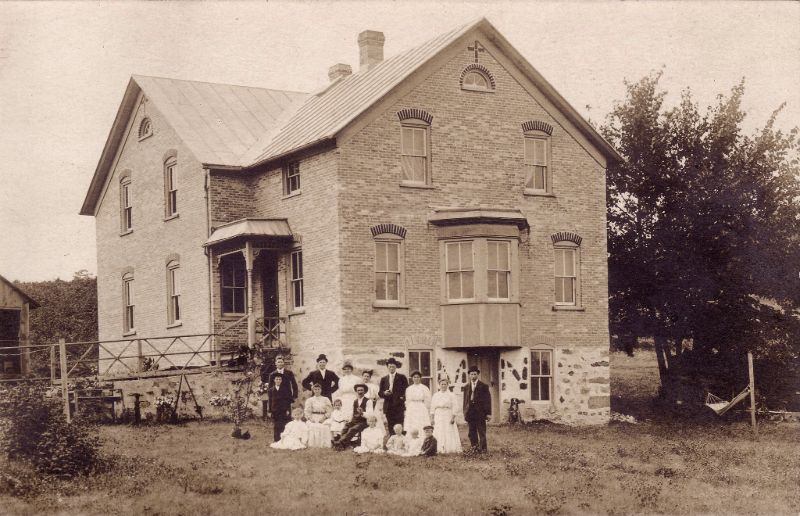


























.jpg)
.jpg)
.jpg)
.jpg)
.jpg)
.jpg)
.jpg)
.jpg)
.jpg)
.jpg)
.jpg)
.jpg)
.jpg)
.jpg)
.jpg)
.jpg)
.jpg)
.jpg)